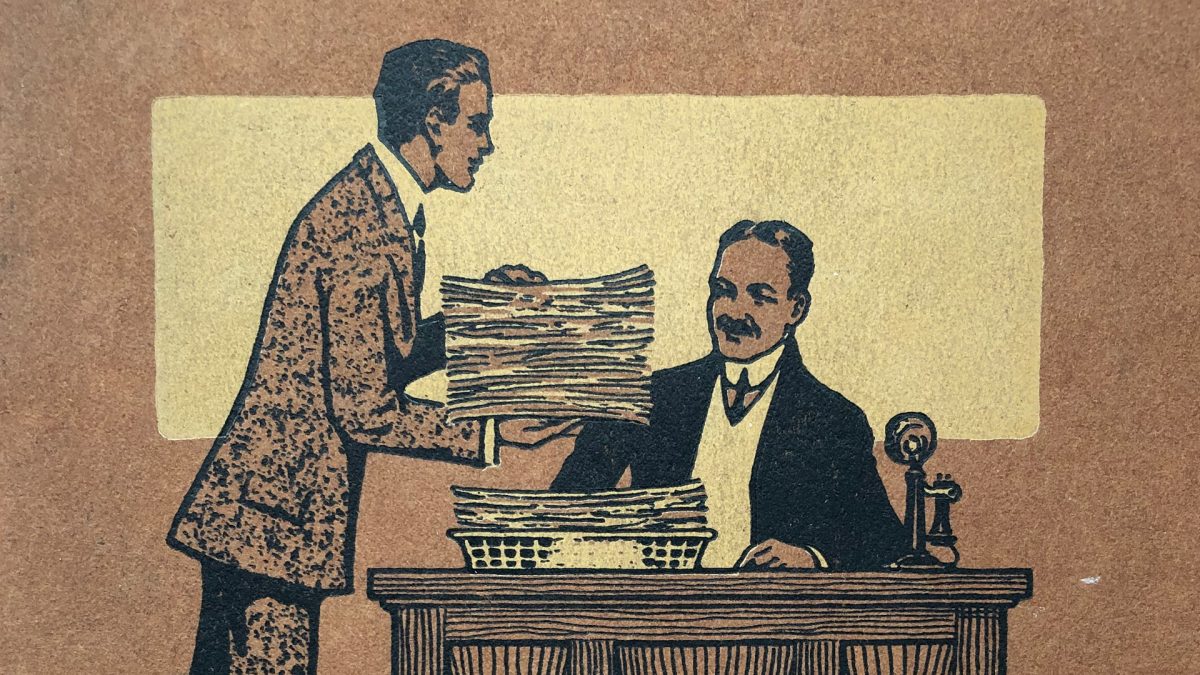

True North’s Senior Art Director, Maryah, brought in her dad’s vintage advertising booklets. Published in the early 1900s, they’re filled with timeless wisdom and dense long-form copy from the days when people still had the attention span to read. Her dad was an avid collector who loved bringing home new finds from yard sales and auctions.
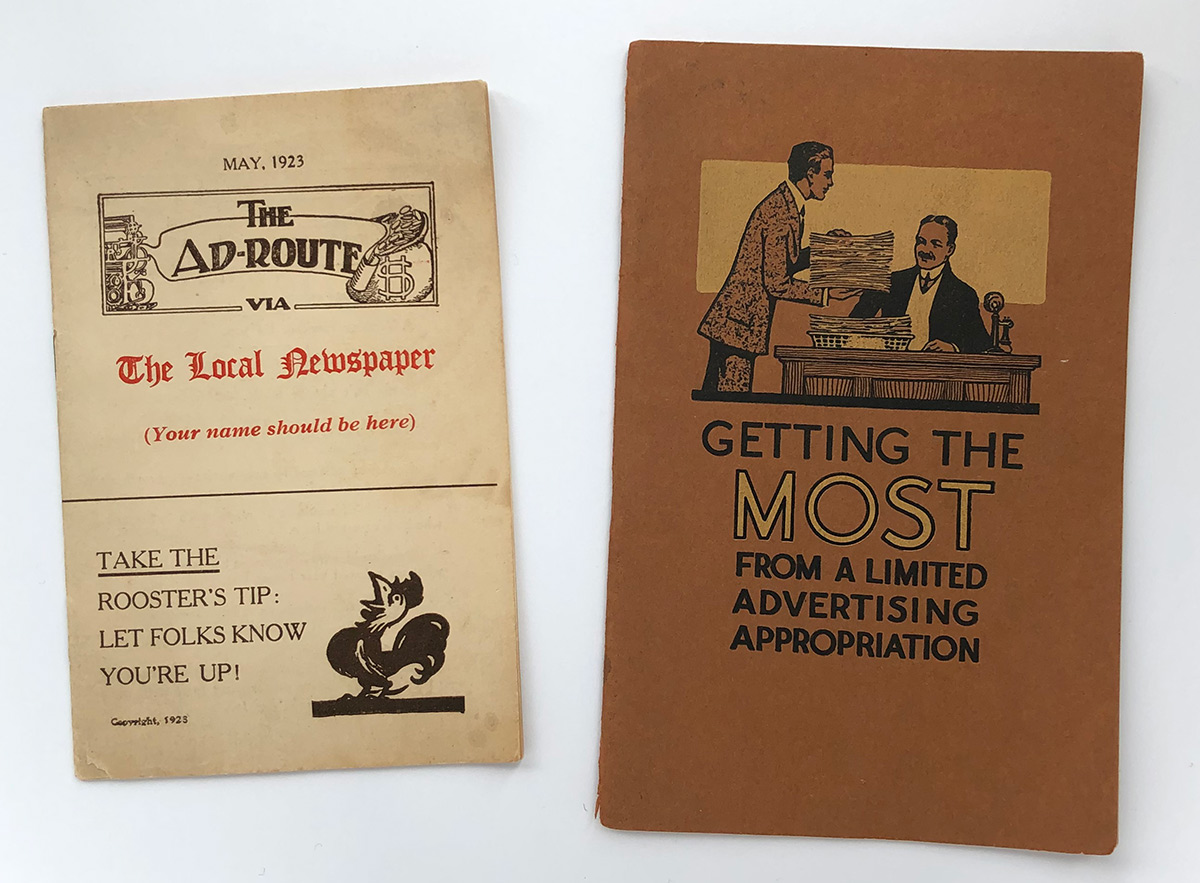
Like many items he collected, these booklets possess a rich history and offer a glimpse into what life was like during a different era. The Ad-Route via The Local Newspaper touts the effectiveness of newspapers as the key channel for reaching customers in 1923, while Getting the Most from a Limited Advertising Appropriation recounts the advantages of direct mail advertising in 1914.
Although most advertising has evolved to digital and social channels today, many of the century-old tenets still ring true.
- Ideas should grow: we needn’t necessarily believe what we believed the year before last.
- Bring customers who are interested in your offerings. That’s what good advertising does.
- Make your advertising please the women — the men will follow.
- Bustle isn’t always hustle, nor is flutter always progress.
- Trade comes to the store which offers it something worth coming for.
- A good ad followed by poor service is a poor basis for the next good ad.
- Selling without enthusiasm is like running an auto on four flat tires.
- Dollars that dally are dollars that don’t pay.
- Behind all good advertising is knowledge. Knowledge of the goods that are offered. Knowledge of the people to whom they should appeal. Knowledge of the reasons why they should appeal. Knowledge of the service and satisfaction buyers will get from the goods.
In addition to recommendations for improving sales and advertising, the booklets also employ symbolic storytelling and metaphors, like this one comparing gardening to advertising. The lesson is that we must prime people with the right message over time before they will become paying customers and brand loyal.
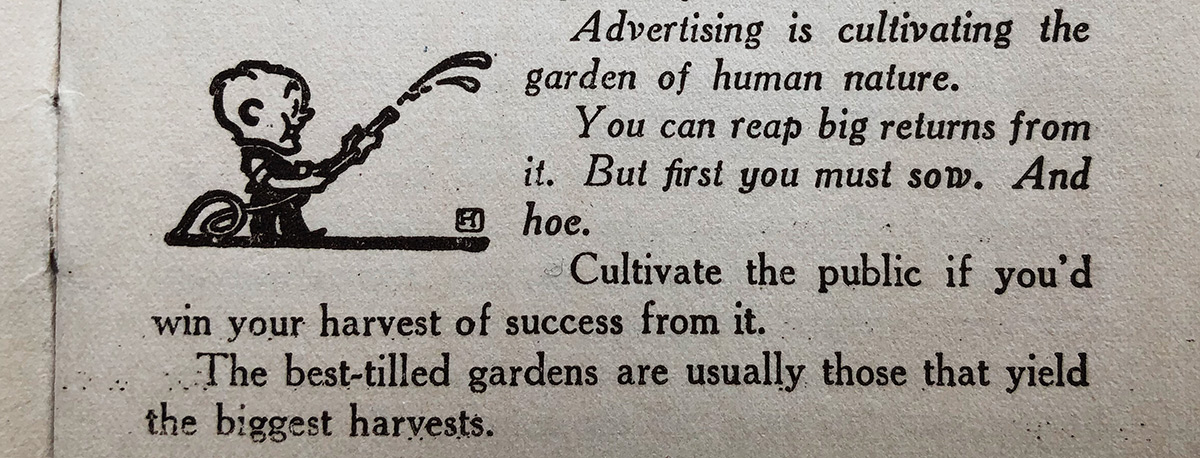
Another anecdote in The Ad-Route via The Local Newspaper advises communicating the emotional benefits of your product or service, rather than simply stating the practical needs.
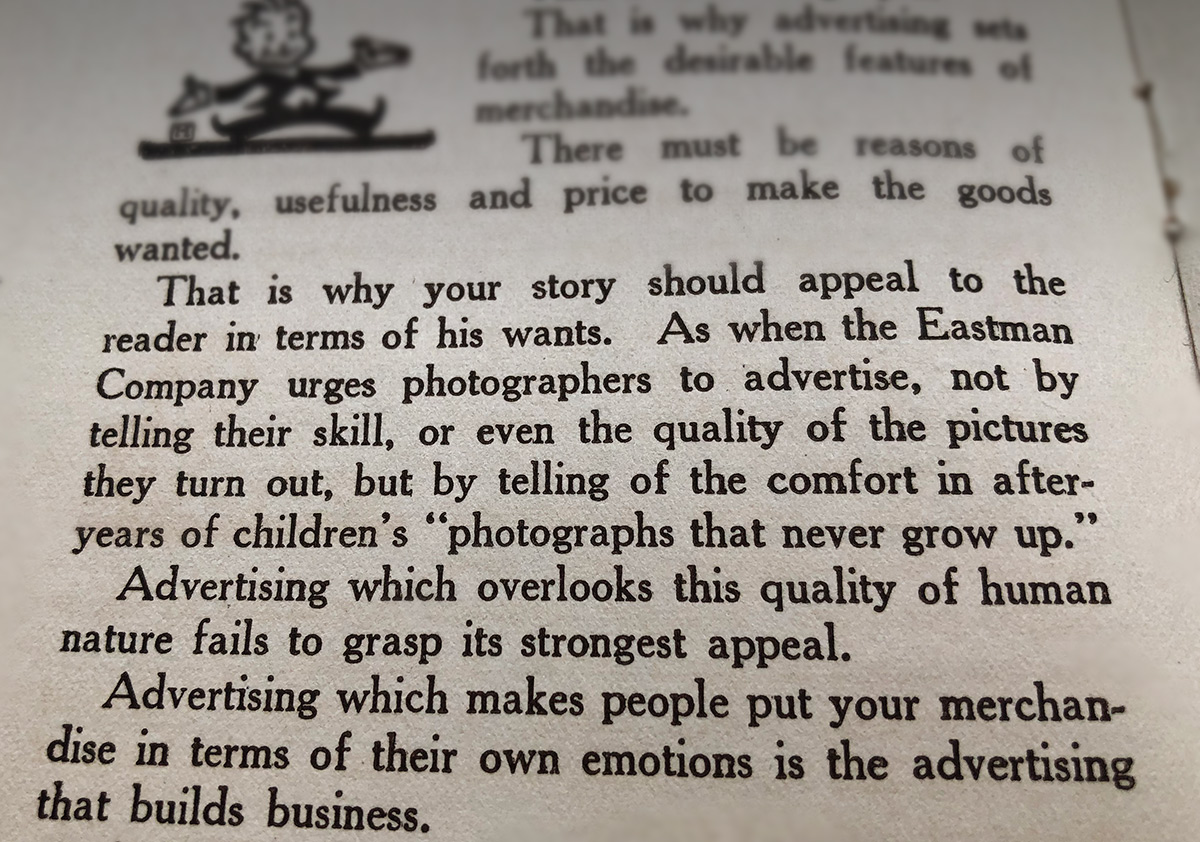
Similarly, Getting the Most from a Limited Advertising Appropriation distinguishes its personal approach to advertising versus competitors, like classified ads in magazines or newspapers.
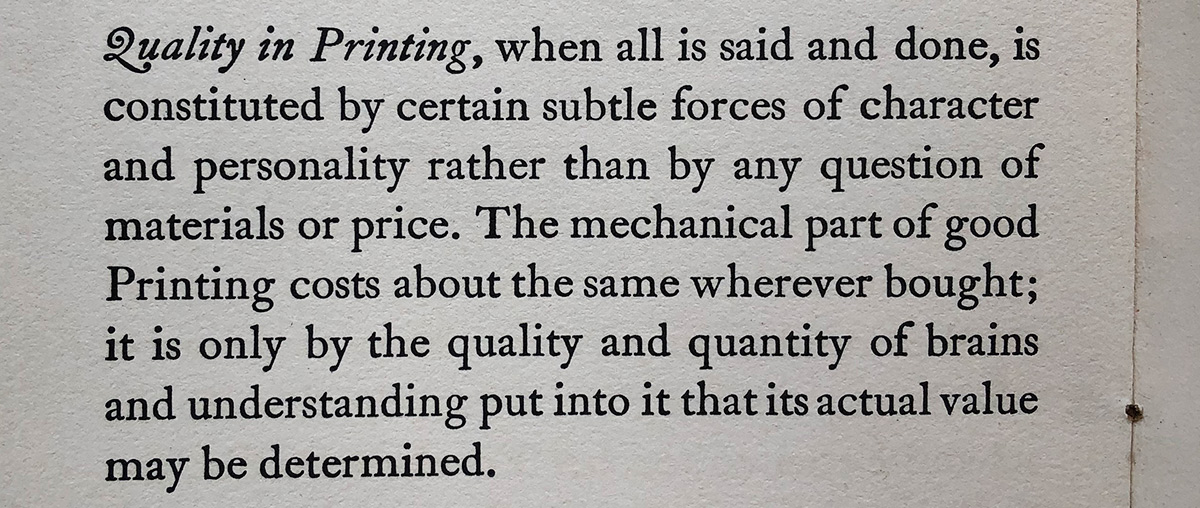
In 1923, people looked forward to their morning newspaper and pored over every page. Although we consume the news on devices today, the following message about identifying the right time, placement, and audience is still relevant, maybe even more so now that we’re so inundated with information.
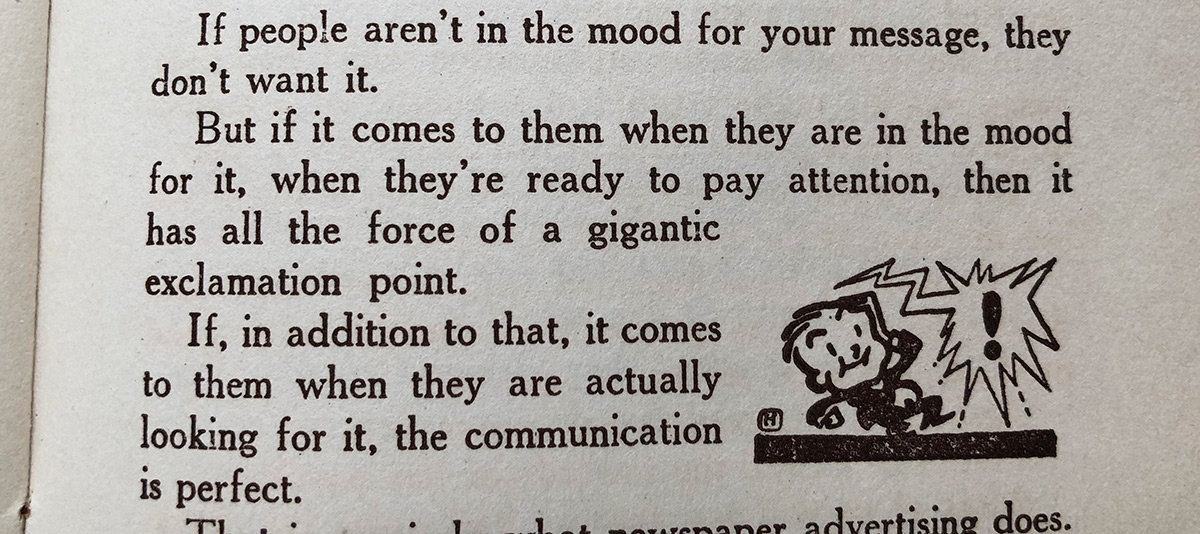
Getting the Most from a Limited Advertising Appropriation contests the notion that mass distribution of newspapers is best.
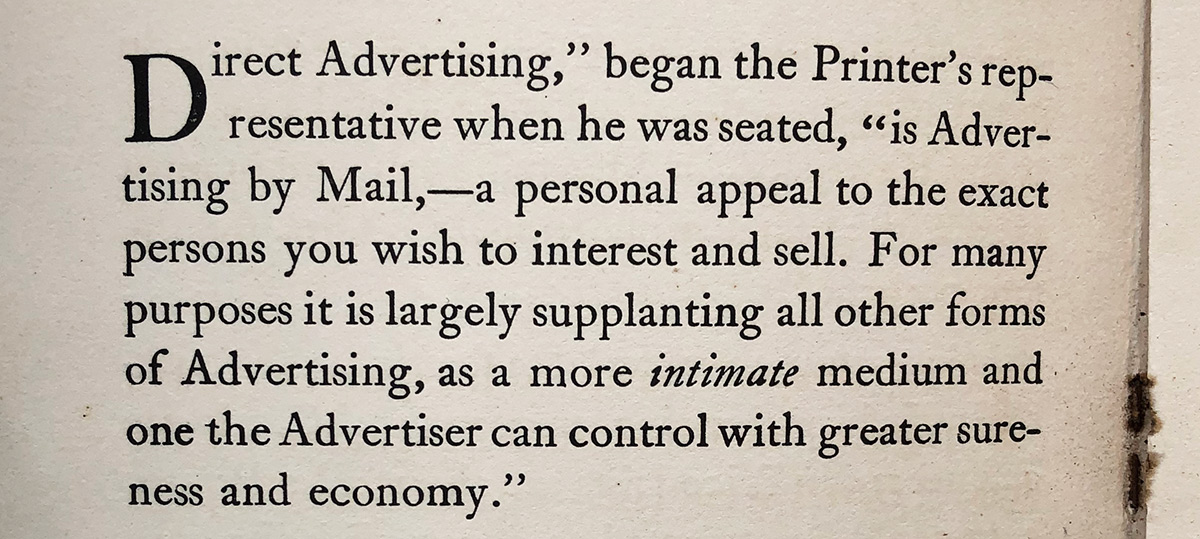
There is more control and customization with Direct Advertising because:
- You go wherever you want to sell—and only there.
- You go only to as many people as you can afford to reach at a time.
- You pay for only that portion of the circulation you use.
- You exercise your own judgment in the selection of the people to whom you wish to advertise.
- You are not bound down to certain fixed days, with perhaps a month of inaction between.
- Uncle Sam’s Mail has no closing dates. There are no restrictions—except that you be clean and honest.
- You get out of your printing what you put into it. If quality of production is stinted, it is fairly certain to follow that the caliber of results will be stunted.
It’s been nearly 100 years since the ink has dried yet the words remain pertinent because human nature is largely unchanged. Of course, consumer behavior and technology have vastly evolved, and planning advertising today is more complex with the proliferation of media. Nevertheless, we can glean lasting truths from simpler times and remind ourselves what makes a good ad at its core.

